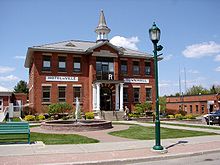A heatwave hit the region last week, with midday temperatures above 30 degrees Celsius for several days in a row. The Eastern Ontario Health Unit (EOHU) has released a list of measures to prevent heat-related illnesses, especially among those at risk such as the elderly, infants, young children, people with chronic illnesses, people who work or exercise outdoors, homeless people and people with low incomes.
The EOHU recommends that people who go outside drink plenty of water before they feel thirsty to reduce the risk of dehydration. Thirst is not a good indicator of dehydration. He also recommends residents wear loose, light-colored clothing, and never leave people or animals inside a parked vehicle or in direct sunlight. Take frequent breaks in a cool place, such as in the shade of a tree or in an air-conditioned company, or take a cool shower or bath until you are refreshed. Block the sun by closing awnings and curtains, and wearing a wide-brimmed hat or umbrella.
Finally, the BSEO points out that children do not sweat as much as adults and are therefore more exposed to heat-related illnesses.
Heat-related illnesses include heatstroke and exhaustion, fainting, swelling of hands and feet, skin rashes and muscle cramps. Symptoms of heat-related illnesses include: dizziness, fainting, nausea, vomiting, headache, rapid breathing and heart rate, extreme thirst, and decreased urination with unusually dark yellow urine. Anyone with these symptoms should go to a cool place and drink fluids, especially water.
The EOHU warns residents that heat stroke is a medical emergency. Call 911 immediately if you are caring for someone with an elevated body temperature who is unconscious, confused, or has stopped sweating. While waiting for help, cool the person immediately by moving them to a cool place, applying cold water to large areas of skin or clothing, and fanning them as much as possible.
For more information, visit www.EOHU.ca/heat



